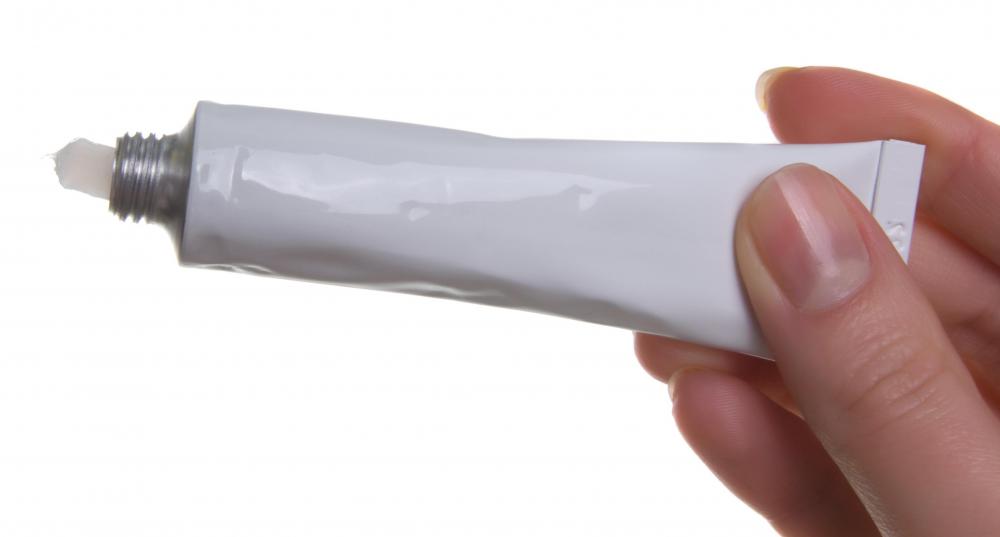At WiseGEEK, we're committed to delivering accurate, trustworthy information. Our expert-authored content is rigorously fact-checked and sourced from credible authorities. Discover how we uphold the highest standards in providing you with reliable knowledge.
What Are the Uses for Fluocinonide Cream?
The uses of fluocinonide cream include treatment of the itching, dryness, swelling and discomfort of the skin associated with conditions such as eczema, dermatitis, allergic reactions and insect bites. The cream is applied topically, which means to the affected area, and is primarily used for the management of the symptoms associated with the conditions. Uses of cream containing fluocinonide also include the treatment of rashes and abrasions resulting from conditions such as poison ivy.
Fluocinonide cream is classed as a corticosteroid, which is generally used for its anti-inflammatory properties, and helpful for conditions such as allergic reactions. Corticosteroids such as fluocinonide are available in many different forms for application onto the skin, such as creams, ointments, gels or lotions. Generally, cream containing fluocinonide is the most commonly used of these forms, and is widely available.

The most common use of fluocinonide cream is for skin conditions that manifest themselves through redness, swelling and itching. The cream reduces the effect of these symptoms, and therefore makes conditions such as eczema, dermatitis and insect bites more manageable. The cream is applied to the affected area between two and four times per day, or as directed by the patient’s doctor. Generally, doctors will advise patients to apply fluocinonide cream more frequently if the condition is not responding to the current levels of cream being administered.

Before using this product, patients are advised to wash and dry the affected area. This gives the cream the best chance to work, and ensures that no environmental contaminants inhibit the cream’s effects. Covering the affected area after applying a thin layer of cream may increase the effects of the treatment, but patients should discuss this with a doctor before attempting it. Although covering the affected area can increase the effectiveness of the cream, it can also exacerbate any side effects the patient may be experiencing.

The possible side effects when taking fluocinonide cream include burning, stinging, itching and redness in the area to which the medication is being applied. Generally, patients’ bodies will become accustomed to the treatment after a few days. Other possible side effects of fluocinonide cream include unusual hair growth and acne. Patients should inform their doctor if any of these side effects are particularly severe or persist for an extended period of time.
AS FEATURED ON:
AS FEATURED ON:













Discuss this Article
Post your comments